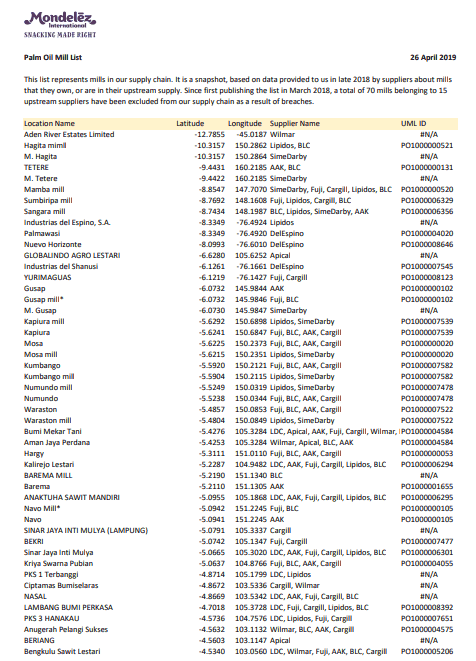Consumers, especially millennials, are demanding more and more information on where an how products they are considering for purchase were sourced.
That's the general belief these days, especially in the food sector, where companies are inceasingly making available detailed information on their supply chains on-line.
Supply Chain Digest Says... |
 |
| About 60% of shoppers in the US, China and three major European markets said they place a strong emphasis on the source of ingredients. |
 |
What do you say? |
| Click here to send us your comments |
 |
| Click here to see reader feedback |
|
|
Recently, a report from Accenture on its projections for spending in the upcoming Holiday season also noted consumers' growing interest in this type of information.
"We have entered the era of "responsible retail," where consumers are becoming more environmentally and socially conscious and will increasingly turn to brands that not only talk about responsibility but demonstrate it through their business practices," Accenture said.
And that shift is empowered by mobile phone technology, from which the scanning of a QR bar code can increasingly call up a web page with details on how the product was sourced and more.
A recent article in the Wall Street Journal noted that "Companies are responding in part by serving up new information on-line about the commodities they buy around the world."
This information, the Journal notes, is starting to give investors and the public a glimpse into the sprawling supply chains the companies have spent years developing.
As just one example, Mondelez puts on-line detailed data about its cocoa supply chain, including a map with satellite views that pinpoint the locations of more than 93,000 farms in Ghana, Ivory Coast and Indonesia that provide cocoa that goes into its products – even though it does not have a direct relationship with these farms, who sell to distributors which sell to Mondelez.
Many on the environmental front say it's about time.
"It's a first step that should have been taken a long time ago," Diana Ruiz of Greenpeace USA told the Journal. "It's a first step that should have been taken a long time ago."
(See More Below)
|
CATEGORY SPONSOR: SOFTEON |
|
|
| |
|
|
But providing that level of visibility is not without risks.
Palm oil as most know has been a huge focus area for environmental groups, concerned the widely used ingredient is causing deforestation in several Asian nations. In 2014, for example, Greenpeace activists somehow managed to climb the two towers of consumer products giant Procter & Gamble's headquarters in downtown Cincinnati, unfurling banners criticizing the company's palm oil sourcing practices.
Now, environmentalists are using the detailed sourcing data against the companies that disclosed the information.
For example, the Journal reports that the Rainforest Action Network used palm-oil-mill information published by major US and European consumer-product companies in a September report that alleged those companies may be using palm oil produced in an ecologically sensitive wildlife preserve in Indonesia.
The Journal says Mondelez, General Mills and Kellogg are among the food manufacturers now posting lists on-line of companies that mill the palm oil they buy from traders. Unilever discloses on its website the location of its palm-oil mills and refineries. Nestlé makes available on-line lists of meat slaughterhouses as well as palm-oil mills and other suppliers.
Page 1 of More than 50 Pages of Mondelez's List of Palm Oil Suppliers

Of course, commodities by definition are undifferentiated products that are usually merged from multiple suppliers for shipment to traders or distributors selling to final users or often still more intermediaries. Farms and processing facilities come and go. Use of technology in this supply chain at the source level and more is low.
So providing detailed sourcing information is extremely difficult. But food companies are making the investments.
And that's because of data like this: About 60% of shoppers in the US, China and three major European markets said they place a strong emphasis on the source of ingredients when purchasing healthier products, according to a survey conducted last year by the consulting firm AlixPartners.
However, whether consumers can really make sense of all this data is a question.
"For most shoppers, sorting through suppliers of agricultural commodities offers little in the way of context or ideas for taking any action," the Journal notes.
What's your take on food companies making this kind of supply chain data availlable? Can consumers really do anything with it? Let us know your thoughts at the Feedback section below.
Your Comments/Feedback
|